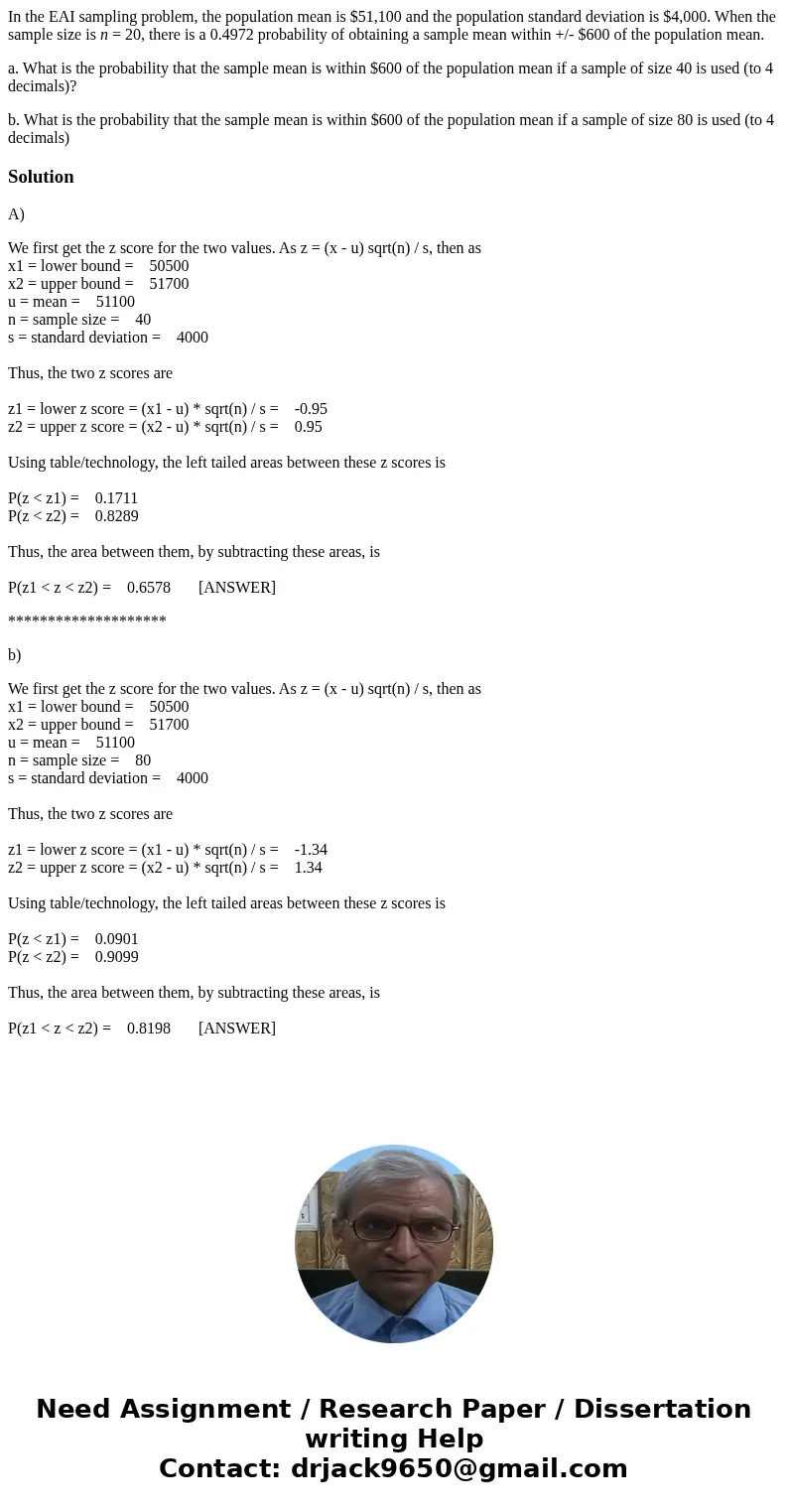In the EAI sampling problem the population mean is 51100 and
In the EAI sampling problem, the population mean is $51,100 and the population standard deviation is $4,000. When the sample size is n = 20, there is a 0.4972 probability of obtaining a sample mean within +/- $600 of the population mean.
a. What is the probability that the sample mean is within $600 of the population mean if a sample of size 40 is used (to 4 decimals)?
b. What is the probability that the sample mean is within $600 of the population mean if a sample of size 80 is used (to 4 decimals)
Solution
A)
We first get the z score for the two values. As z = (x - u) sqrt(n) / s, then as
x1 = lower bound = 50500
x2 = upper bound = 51700
u = mean = 51100
n = sample size = 40
s = standard deviation = 4000
Thus, the two z scores are
z1 = lower z score = (x1 - u) * sqrt(n) / s = -0.95
z2 = upper z score = (x2 - u) * sqrt(n) / s = 0.95
Using table/technology, the left tailed areas between these z scores is
P(z < z1) = 0.1711
P(z < z2) = 0.8289
Thus, the area between them, by subtracting these areas, is
P(z1 < z < z2) = 0.6578 [ANSWER]
********************
b)
We first get the z score for the two values. As z = (x - u) sqrt(n) / s, then as
x1 = lower bound = 50500
x2 = upper bound = 51700
u = mean = 51100
n = sample size = 80
s = standard deviation = 4000
Thus, the two z scores are
z1 = lower z score = (x1 - u) * sqrt(n) / s = -1.34
z2 = upper z score = (x2 - u) * sqrt(n) / s = 1.34
Using table/technology, the left tailed areas between these z scores is
P(z < z1) = 0.0901
P(z < z2) = 0.9099
Thus, the area between them, by subtracting these areas, is
P(z1 < z < z2) = 0.8198 [ANSWER]

 Homework Sourse
Homework Sourse